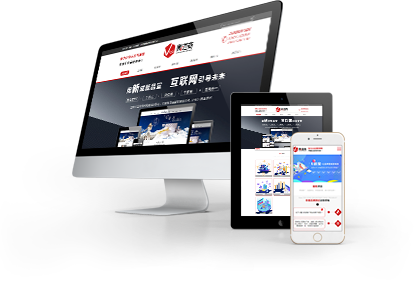在网站建设中,模板是非常重要的一部分,它决定了网站的外观和用户体验。但是,现成的模板往往无法完全满足个性化需求,因此需要进行自定义。下面
济南做网站公司将介绍如何自定义模板以满足个性化需求。
In website construction, templates are a very important part that determines the appearance and user experience of the website. However, ready-made templates often cannot fully meet personalized needs, so customization is necessary. Below, Jinan website company will introduce how to customize templates to meet personalized needs.
一、了解模板结构
1、 Understand template structure
在进行自定义之前,需要了解模板的结构和组成部分。通常,一个模板包括以下几个部分:
Before customizing, it is necessary to understand the structure and components of the template. Typically, a template consists of the following parts:
1.头部:包括网站的标题、Logo、导航栏等。
1. Header: includes the website's title, logo, navigation bar, etc.
2.主体:包括网站的内容、布局、样式等。
2. Main body: including website content, layout, style, etc.
3.侧边栏:包括网站的辅助功能、广告等。
3. Sidebar: includes website accessibility features, advertisements, etc.
4.底部:包括网站的版权信息、友情链接等。
4. Bottom: includes website copyright information, friendly links, etc.
二、选择合适的工具
2、 Choose the appropriate tool
在进行自定义之前,需要选择合适的工具。通常,可以使用以下几种工具:
Before customizing, it is necessary to select the appropriate tool. Typically, the following tools can be used:
1.文本编辑器:可以使用文本编辑器进行模板的修改和编辑,如Notepad++、SublimeText等。
1. Text editor: You can use a text editor to modify and edit templates, such as Notepad++, SublimeText, etc.
2.图形编辑器:可以使用图形编辑器进行模板的设计和美化,如Photoshop、Sketch等。
2. Graph Editor: You can use a graph editor to design and beautify templates, such as Photoshop, Sketch, etc.
3.模板编辑器:可以使用模板编辑器进行模板的修改和编辑,如Dreamweaver、Artisteer等。
3. Template Editor: You can use a template editor to modify and edit templates, such as Dreamweaver, Artisteer, etc.

三、在选择好工具之后,可以开始进行自定义。具体步骤如下:
3、 After selecting the tool, customization can begin. The specific steps are as follows:
1.备份原始模板:在进行自定义之前,需要备份原始模板,以防止修改出错。
1. Back up the original template: Before customization, it is necessary to back up the original template to prevent modification errors.
2.修改头部:可以修改头部的标题、Logo、导航栏等,以满足个性化需求。
2. Modify header: You can modify the header's title, logo, navigation bar, etc. to meet personalized needs.
3.修改主体:可以修改主体的内容、布局、样式等,以满足个性化需求。
3. Modify the subject: You can modify the content, layout, style, etc. of the subject to meet personalized needs.
4.修改侧边栏:可以修改侧边栏的辅助功能、广告等,以满足个性化需求。
4. Modify the sidebar: You can modify the auxiliary functions, advertisements, etc. of the sidebar to meet personalized needs.
5.修改底部:可以修改底部的版权信息、友情链接等,以满足个性化需求。
5. Modify bottom: You can modify the copyright information, friendship links, etc. at the bottom to meet personalized needs.
6.测试和优化:在进行自定义之后,需要进行测试和优化,以确保网站的质量和稳定性。
6. Testing and optimization: After customization, testing and optimization are required to ensure the quality and stability of the website.
在进行自定义之前,需要了解模板的结构和组成部分,选择合适的工具,遵循规范,保持简洁,进行测试和优化。通过自定义模板,可以打造出独具特色的网站,提高用户体验和形象。更多相关事项就来我们网站
http://www.jnzyjz.cn咨询!
Before customization, it is necessary to understand the structure and components of the template, select appropriate tools, follow specifications, maintain simplicity, and conduct testing and optimization. By customizing templates, unique websites can be created to enhance user experience and brand image. For more related matters, come to our website http://www.jnzyjz.cn consulting service

